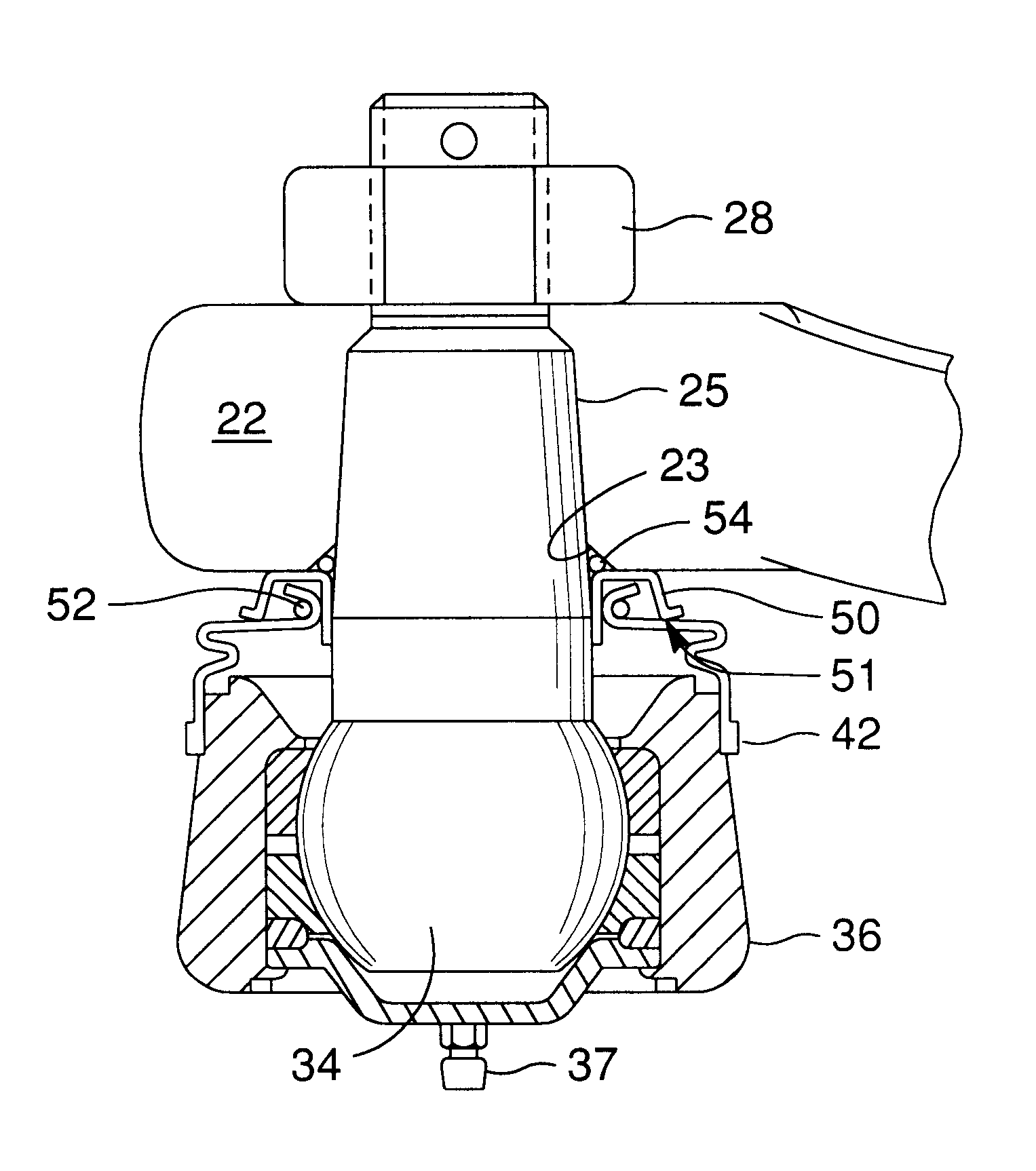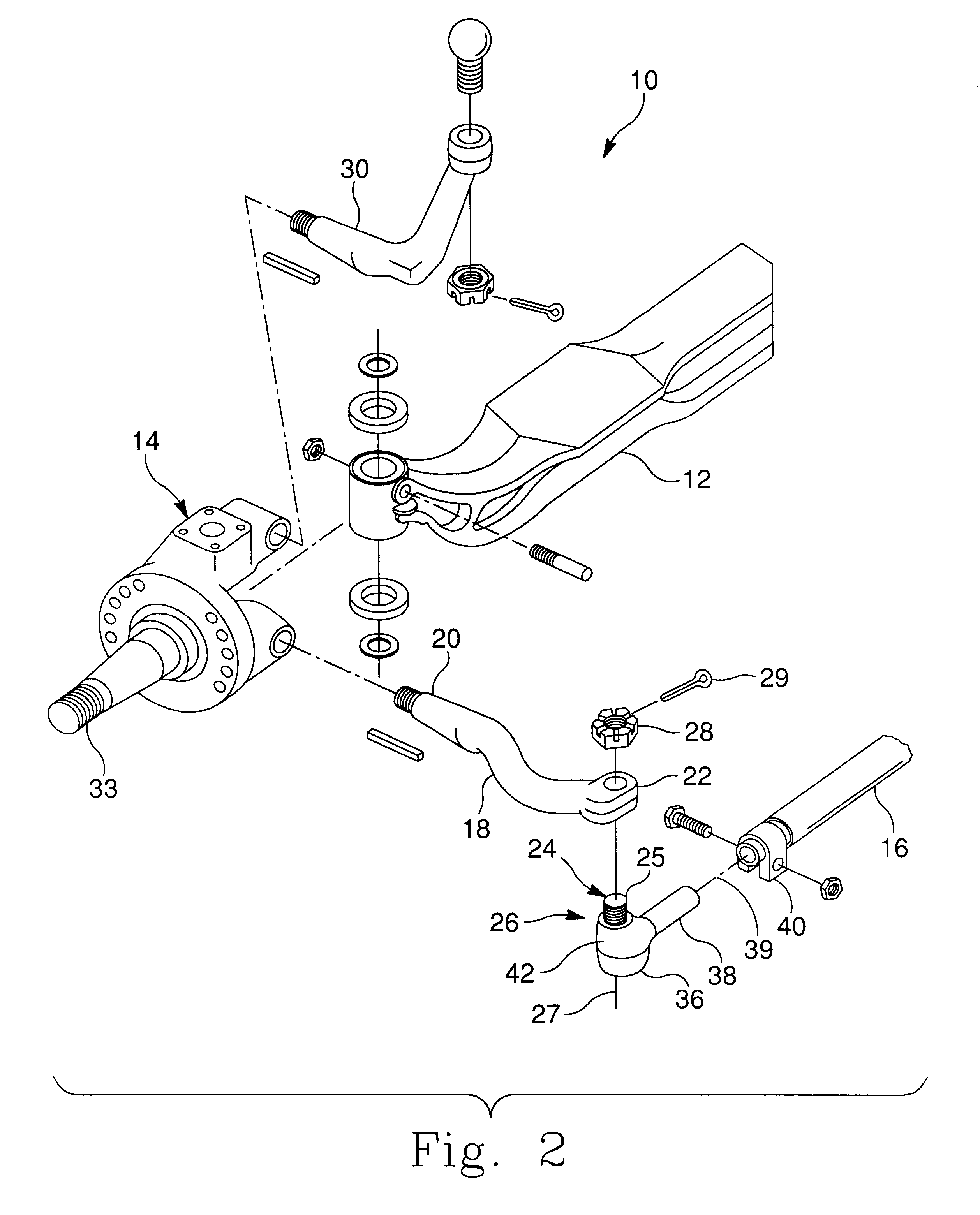Unitized boot seal for ball joints
a unitized and ball joint technology, applied in the direction of mechanical equipment, couplings, transportation and packaging, etc., can solve the problems of ball joint wear, aforementioned wear and the formation of an opening in the boot, and wear to the joint connection
- Summary
- Abstract
- Description
- Claims
- Application Information
AI Technical Summary
Benefits of technology
Problems solved by technology
Method used
Image
Examples
Embodiment Construction
With reference to FIG. 1 of the drawings, shown is a partial perspective view of a typical front steering assembly 10 of a motor vehicle. Included in front steering assembly 10 are major components and sub-assemblies such as a steer axle beam 12, a steering knuckle 14, and a tie rod (or track rod) cross tube 16. Steer axle beam 12 is received by steering knuckle 14 and is coupled thereto. These components are also shown in FIG. 2.
Steering knuckle assembly 14 includes an input / output member 18 which is more commonly known as a tie rod arm (or Ackermann Arm). Tie rod arm 18 has a first end 20 which is coupled to steering knuckle assembly 14 and a second end 22 which is affixed to a ball stud 24 of a ball joint assembly 26, and mounted thereto by a nut 28. Of course, tie rod arm 18 may also be formed integral to steering knuckle assembly 14. More particularly, the second end 22 (boss end) of tie rod arm 18 is affixed to shank portion 25 of ball stud 24. Steering knuckle assembly 14 als...
PUM
 Login to View More
Login to View More Abstract
Description
Claims
Application Information
 Login to View More
Login to View More - R&D
- Intellectual Property
- Life Sciences
- Materials
- Tech Scout
- Unparalleled Data Quality
- Higher Quality Content
- 60% Fewer Hallucinations
Browse by: Latest US Patents, China's latest patents, Technical Efficacy Thesaurus, Application Domain, Technology Topic, Popular Technical Reports.
© 2025 PatSnap. All rights reserved.Legal|Privacy policy|Modern Slavery Act Transparency Statement|Sitemap|About US| Contact US: help@patsnap.com



